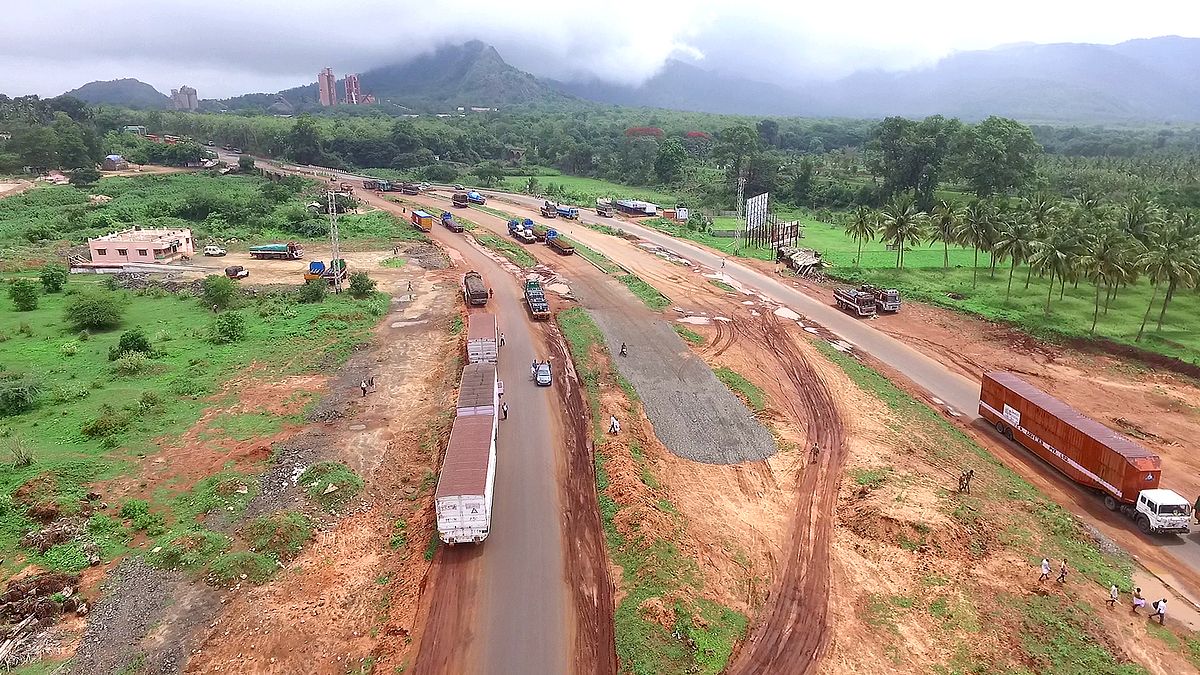 Whats New: JANAL Talks in June: Check our Events!!!
Whats New: JANAL Talks in June: Check our Events!!!  Whats New: JANAL Talks in June: Check our Events!!!
Whats New: JANAL Talks in June: Check our Events!!! 
The Palakkad Pass, a low mountain pass nestled in the Western Ghats also known as the Pashchima Ghat or the Sahyadri Mountains between Coimbatore district in Tamilnadu and Palakkad district in Kerala, is a marvel of nature. Spanning approximately 24-30 km in width, this geographical wonder separates the towering Nilgiris and Anamalai hills, both rising over 2,000 meters above sea level, with an elevation of 140 meters. The Palakkad Pass has played a pivotal role in shaping the region’s history, from being a conduit for ancient trade to serving as a critical transportation route today. Let’s delve into the origins of the Palakkad Pass, its significance in trade and history, and its relevance in the present day.
Numerous theories surround the origin of the Palakkad Pass. Dating back to prehistoric times, the pass’s formation involved geological processes such as shearing and erosion. One hypothesis suggests that the gap was formed by landslides due to rivers flowing in opposite directions. Additionally, some geologists believe that the gap resulted from the drift of continental shelves after the separation of Australia and Africa from the Gondwana landmass. This region, about a 100 million years ago, was once connected to Madagascar’s Ranotsara Gap in the Angavo Mountain. There’s evidence of distinct flora and fauna that share the same geological likeness to that of the Ranotsara Gap which can still be seen today. Two French geologists, Yuri Gunnell and David Harbour proposed this theory in their research paper, published in 2008. Rare and endemic species of birds such as the Tufted Duck, Red Spurfowl and even a threatened species called the White-Bellied Shortwing and about 450 types of trees that have survived hundreds of years have also been found. The vegetation of this area is considered dry evergreen forest.
The Palakkad Pass has been a crucial passage for trade and cultural exchange for thousands of years. Around 3000 BC to 40 AD, Arab traders dominated the Indian Ocean trade zone and used the Palakkad Gap to facilitate trade between South India and the Arabian Peninsula. Roman trade with India began in the 1st to 2nd century CE, with spices and gems being the primary commodities exchanged. The Palakkad Gap served as a vital connection between Kerala and Tamil Nadu during this flourishing trade period. Handicraft works, emeralds, glass and more were sent to the ancient Muziris Port on the western coast through the Palakkadan pass to then be sent to the west. The bead specialist Peter Francis, has stated that these crafts were sent from Kodumanal to Ponnani through this pass also. Without this connection there wouldnt be any intercultural exchange or trade between these two states. This pass is a significant part of South India’s vibrant trading history.
In the 18th century, the Palakkad Pass gained importance during the colonial era when Kerala was invaded for the first time in history by Mysore Sultans- Hyder Ali and Tipu Sultan. The British East India Company eventually took control of the region after several Anglo-Mysore Wars. The Palakkad Pass played a significant role in military campaigns and was considered a key gateway between the east and west coasts of South India.
Prehistoric Times: The Palakkad Gap began to form as a result of geological processes involving shearing and erosion.
3000 BC – 40 AD: The Palakkad Gap played a crucial role in facilitating trade between Kerala and Tamil Nadu.
4th century CE: The Arab traders monopolized trade in the Indian Ocean.
1766: Hyder Ali, the Sultan of Mysore, leads an invasion of the Malabar region and captures the Palakkad Pass, also known as the Palghat Gap, from the Zamorin of Calicut.
1768: The Zamorin attempts to retake the Palakkad Pass from Hyder Ali’s forces but is unsuccessful.
1783: The British East India Company gains control of the Malabar region, including the Palakkad Pass, from Tipu Sultan, after the Second Anglo-Mysore War.
1784: The British and Tipu Sultan sign the Treaty of Mangalore, ending the Second Anglo-Mysore War. As per the treaty, the British returned the Palakkad Pass to Tipu Sultan
1789: The Third Anglo-Mysore War breaks out, and the British once again capture the Palakkad Pass from Tipu Sultan’s forces
1792: The Third Anglo-Mysore War ends with the signing of the Treaty of Seringapatam. Tipu Sultan cedes significant territories to the British, including the Palakkad Pass, and pays a large war indemnity.
1799: The Fourth Anglo-Mysore War commences, and Tipu Sultan’s capital, Seringapatam, falls to the British. Tipu Sultan dies in the battle, and the British annex much of the Mysorean territories, including the Palakkad Pass, into their dominion.
1800s: The British East India Company establishes control over the Malabar region and maintains its presence in the Palakkad Pass.The Palakkad Pass continues to serve as a vital strategic route connecting the eastern and western parts of South India
1947: India gains independence from British rule, and the region around the Palakkad Pass becomes part of the Indian state of Kerala.
Present Day: The Palakkad Pass is used as an essential transportation corridor, facilitating road and rail connections between Kerala and Tamil Nadu.
DID YOU KNOW: The Palakkad Pass also has a great influence on Kerala’s climate; the southwest monsoons as well as storms from the Bay of Bengal cross the mountains through the the opening of the Pass.
Get exciting updates about our events and more